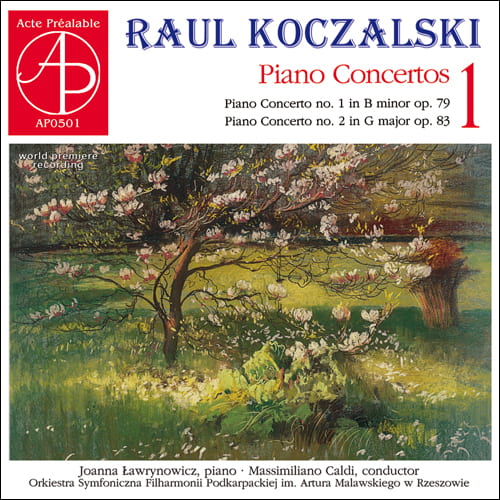Among Polish pianists, Raul Koczalski (1884-1948) is considered among the most important interpreters of Chopin. Born in Warsaw, he made his first public appearance at the age of four and shortly thereafter was admired by the great Anton Rubinstein in St. Petersburg and became a student of Karol Mikuli (one of the last students of Chopin). As a teenager and touring piano virtuoso, Koczalski received awards from the Shah of Persia and King of Spain among others. Praised for his great command of the classical and romantic repertoire, Koczalski lived throughout the 1920s and 1930s in Germany, returning to Poland after World War II and settling in Poznań, where he held professorship at the Music Academy. Koczalski’s numerous recordings for Columbia, HMV, Odeon, Polydor and Muza are widely available and testify to his superb musicianship, beautiful tone and exquisite rubato that might just possibly echo Chopin’s own interpretations.
What is less known about this great pianist is that he was also an exceptionally prolific composer, a fact that was in full evidence in a CD we recently received from pianist Jakub Tchorzewski. Although Koczalski died of a heart attack just before a concert at the relatively young age of 64, he left a prodigious catalog of works, including six piano concertos, several stage and symphonic works, and lots of solo piano and chamber music. Thanks to a series of recordings issued by Acte Préalable during the past several years, there are now three discs of Koczalski’s Piano Concertos (AP0501, 0502, & 0503), String Concertos (AP0504), Complete Songs (AP0601), and four volumes of Chamber Music (AP0383, AP0476, AP0510, and AP0520).
The last volume of the chamber series is devoted to Koczalski’s three Sonatas for Violin and Piano: No. 2, Op. 89, No. 3, Op. 96 and No. 4, Op. 113, performed by two excellent virtuosos in their own right—violinist Agnieszka Marucha and pianist Jakub Tchorzewski. Sonatas Op. 89 and 96 date from the World War I era, and Koczalski’s Op. 113 dates from 1936 with more dense textures and more chromatic harmonies. All three Sonatas demand a great deal of musical prowess to successfully deliver the richly romantic content of Koczalski’s opus. Agnieszka Marucha’s interpretation teases out every virtuosic sparkle and lyrical turn of phrase while Jakub Tchorzewski’s superb command of the keyboard and his innate sense of partnership provided a rich canvas for this rarely-heard music to unfold in the most glorious fashion.
[Sources: Acte Préalable]
